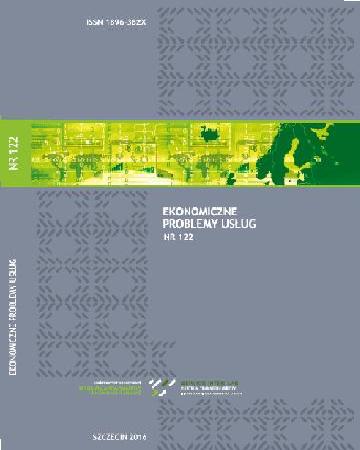
ISSN: 1896-382X
eISSN: 2353-2866
OAI
DOI: 10.18276/epu.2017.126/2-31



Lista wydań /
nr 126 (2) 2017
Wielowymiarowa analiza mediów społecznościowych
| Autorzy: |
Wiesław
Wolny
Uniwersytet Ekonomiczny w Katowicach |
| Słowa kluczowe: | media społecznościowe analiza mediów społecznościowych techniki odkry¬wania wiedzy |
| Data publikacji całości: | 2017 |
| Liczba stron: | 9 (305-313) |
| Klasyfikacja JEL: | C88 |
Abstrakt
Media społecznościowe w ostatnich latach przyciągają szczególną uwagę badaczy. Setki milionów ludzi spędza niezliczone godziny dzieląc się informacjami, opiniami, zdjęciami czy tworząc grupy zainteresowań. Jest to nowe, bogate źródło danych mające olbrzymi potencjał badawczy dla naukowców i do zastosowań praktycznych. W artykule zawarto koncepcję metody analizy mediów społecznościowych opartą na wielu wymiarach. Wymiary te obejmują analizę: danych tekstowych, użytkowników, sieci społecznościowych, danych geograficznych i obrazów.
Pobierz plik
Plik artykułu
Bibliografia
| 1. | Elei, D.M., Ng, A.Y., Jordan, M.I. (2003). Latent Dirichlet Allocation. The Journal of Machine Learning Research, 3, 993-1022. |
| 2. | Donelly III, J. (2016). The future of social intelligence: image recognition and analysis. Pobrane z: http://rnarketingland.com/future-social-intelligence-image-recognition-analysis- l 79902 (2.01.2017). |
| 3. | Ghosh, R., Lerman, K. (2011). Parameterized centrality metric for network analysis. Physical Review E, 83 (6), 66118. Pobrane z: https://doi.org/10.1103/PhysRevE.83.066118. |
| 4. | Hansen, D.L., Smith, M.A., Shneiderman, B. (2011). EventGraphs: Charting Collections of Con-ference Connections. 44th Hawaii International Conference on Systems Science (HICSS- 44 2011), Proceedings, 4-7.01.2011. Koloa, Kauai, HI, USA (s. 1-10). Pobrane z: https://doi.org/10.1109/HICSS.2011.196. |
| 5. | Hansen, D., Shneiderman B., Smith M.A. (2010). Analyzing Social Media Networks with NodeXL: Insights from a Connected World. San Francisco, CA, USA: Morgan Kanfmann Publishers Inc. |
| 6. | Hatzivassiloglou, V., McKeown, K.R. (1997). Predicting the Semantic Orientation of Adjectives. |
| 7. | Proceedings of the 35th Annual Meeting of the Association for Computational Linguistics and Eighth Conference of the European Chapter of the Association for Computational Linguistics (s. 174-181). Madrid, Spain: Association for Computational Linguistics. Pobrano z: https://doi.org/10.3115/976909.979640. |
| 8. | Kim, S.M., Hovy, E. (2004). Determining the Sentiment of Opinions. Proceedings of the 20th Inter-national Conference on Computational Linguistics. Geneva, Switzerland: Association for Computational Linguistics. Pobrano z: https://doi.org/10.3115/1220355.1220555. |
| 9. | Kumar, S., Morstatter, F., Liu, H. (2013). Twitter DataAnalytics. Springer. |
| 10. | Pang, B., Lee, L. (2004). A Sentimental Education: Sentiment Analysis Using Subjectivity Sum-marization Based on Minimum Cuts. Proceedings of the 42Nd Annual Meeting on Asso¬ciation for Computational Linguistics. Barcelona, Spain: Association for Computational Linguistics. Pobrano z: https://doi.org/10.3115/1218955.1218990. |
| 11. | Socher, R., Pennington, J., Huang, E.H., Ng, A.Y., Manning, C.D. (2011). Semi-supervised Re¬cursive Autoencoders for Predicting Sentiment Distributions. Proceedings of the Confer¬ence on Empirical Methods in Natural Language Processing (s. 151-161). Edinburgh, United Kingdom: Association for Computational Linguistics. Pobrano z: http://dl.acm. org/citation.cfm?id=2145432.2145450 |
| 12. | Tromp, E., Pechenizkiy, M. (2015). Pattern-Based Emotion Classification on Social Media. |
| 13. | W: Advances in Social Media Analysis, t. 602 (s. 1-20). Springer. Pobrano z: http://dx. doi.org/10.1007 /978-3-319-18458-61 |
| 14. | Wilson, T., Wiebe, J., Hoffmann, P. (2009). Recognizing Contextual Polarity: An Exploration of Features for Phrase-level Sentiment Analysis. Computational Linguistics, 35 (3), 399- 433. |
| 15. | Wolny, W. (2016). Emotion Analysis of Twitter Data That Use Emoticons and Emoji Ideograms. |
| 16. | International Conference on Information Systems Development (ISD). Pobrane z: http://aisel.aisnet.org/isd2014/proceed- ings2016/CreativitySupport/5 (1.12.2016). |
| 17. | Zhu, W.D., Iwai, A, Leyba, T., Magdalen, J., McNeil, K., Nasukawa, T., Redbooks, I. (2011). |
| 18. | IBM Content Analytics Version 2.2: Discovering Actionable Insight from Your Content. Vervante. Pobrane z: https://books.- google.pl/books?id=MRnCAgAAQBAJ (1.12.2016). |